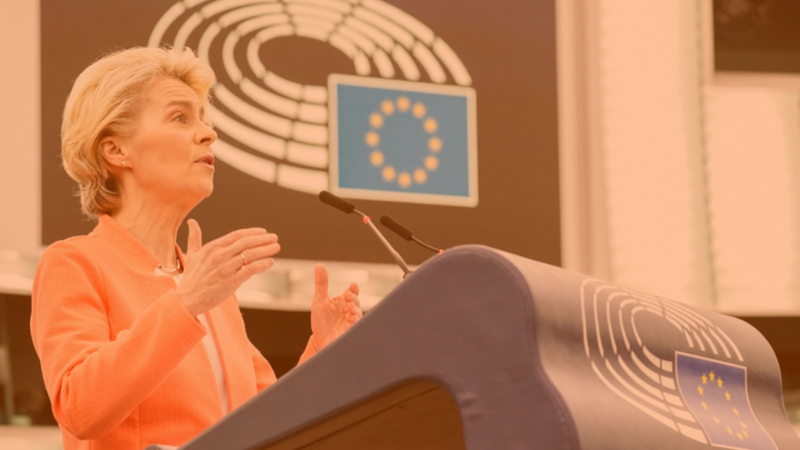Whether wind, solar, gas or nuclear, incentivising private finance is not going to solve climate change. The latest furore over EU sustainability labels misses the point. We need more sustainable public investment and less harmful private investments in order to cut emissions and build a truly sustainable future.
The European Union aims to reduce greenhouse gas emissions by at least 55 percent by 2030 and become climate neutral by 2050. It’s going to take a huge amount of investment in green projects and renewable energy if these targets are to be achieved.
The ‘EU Taxonomy for Sustainable Investments’ is supposed to contribute to this. The idea is that clear labels showing which projects and activities are ‘sustainable,’ along with regulatory incentives to send private finance in this direction, will ‘unleash a green investment wave’ across Europe. Investors will pour money into renewable energy and sustainable projects, greenhouse gas emissions will plummet, and Europe will have done its part to avoid climate catastrophe.
Which is why a recent decision by the European Commission to include nuclear energy and fossil gas in its new list of sustainable investments is causing consternation amongst environmental groups and investors alike, who fear that this ‘greenwashed’ label is going to redirect money away from renewable energies like solar and wind and create confusion in financial markets.
Letting the market lead us to sustainability
While there are important debates to be had on the merits and drawbacks of the different potential energy sources necessary to keep global warming well below two degrees, the focus on which companies get a green tick from the EU is a distraction from more important questions.
The real problem with the EU Taxonomy for Sustainable Investments is that it’s part of a broader EU strategy and prevailing worldview that sees solving climate change as dependent on getting private finance to do the right thing, through a series of signals, subsidies, incentives and nudges.
In a capitalist economy, money follows the path of least resistance and finance flows towards where the greatest profits can be made the most easily. Regardless of what benefit this may bring to society, and without concern for the harm it may do.
This is why we are facing climate change and environmental degradation in the first place. Under extractive capitalism, our shared natural resources are privatised for personal gain. While profits from the capitalist exploitation of these resources flow to individuals, the costs from the resulting pollution, biodiversity loss and global warming are borne by communities and the state.
The fact that ‘sustainable investment’ is distinct from all other financial activity is an admission that free market capitalism and the pursuit of individual profit does not result in beneficial outcomes for society.
This taxonomy is therefore founded in a contradiction. Its existence is proof that capitalist financial markets do not serve to benefit society and frequently do the opposite. Yet it is embedded in an ideology and dependent on a belief that we should defer to capitalist financial markets to build the sustainable future we need and save us from climate change.
Green growth: Climate change as a ‘business opportunity’
The idea that capitalist free markets could save us from environmental degradation took off in the 1990s, and has since solidified around oft-repeated slogans of ‘green growth.’ Not only would protecting the environment not be bad for business, it presented a new opportunity for profit generation.
The widespread acceptance of this approach across governments was driven by the revolving door politics that blurs lines between politicians and the private sector; the influence of industry lobbyists and corporate political donations; as well as the dogmatic pursuit of GDP growth as the ultimate economic goal.
Within the ‘green growth’ narrative there is a subtext that, if capitalism can solve climate change through new sustainable business opportunities, then the role of governments should be limited to facilitating this with as little interference as possible, and a preference always for carrot over stick.
The EU Sustainable Taxonomy is one of these carrots. If companies can demonstrate that their activities fall under one of the green labels, then they can access the growing pool of funds earmarked for ‘sustainable investment’ to finance their projects, as well as get the reputational brownie points for being officially ‘sustainable’ according to the EU.
Shades of brown to green
Despite the noise around sustainable investments, it’s still dirty investments that prevail. In 2018, out of the $1.8 trillion invested globally in all aspects of the energy sector, only around $300 billion went into renewables, and the bulk of the rest went to fossil fuels where there are still greater profits to be made.
While the EU Taxonomy may have an influence on part of the private sector that is working towards making their operations more sustainable, there are still huge amounts of economic activity that is not sustainable, has no intention of becoming more sustainable and in many cases is actively damaging the environment and contributing to global warming.
To have a real impact on cutting carbon pollution and driving investment in sustainable activities, the taxonomy needs to not only identify which activities are green, but categorise all activity from most sustainable to most harmful. DiEM25’s blueprint for Europe’s just transition, the Green New Deal for Europe, puts forward an alternative proposal for what such a taxonomy would entail:
Firstly, the taxonomy must identify environmentally-destructive activities, ensuring that companies engaged in such activities face direct impacts on their finances.
Secondly, the taxonomy must look more holistically at the climate and environmental impacts of business activities; those that contribute to the transition to a low-carbon economy should not be viewed favourably if they exacerbate climate or environmental breakdown in other ways.
Thirdly, it must move away from a binary model in which the taxonomy either does or does not apply to a given activity, and instead identify degrees of greenness and brownness.
The Green New Deal for Europe paper explains that: “this will ensure that the risks and externalities of investments in non-renewables are accounted for more accurately, which can also support the accurate long-term pricing of fossil fuel assets — dramatically lowering their market value and paving the way for the orderly winding-down of fossil fuel companies.”
What DiEM25’s Green New Deal for Europe incorporates that the EU Taxonomy misses is that, until the true cost of harming the environment is internalised and starts having an impact on profitability, no amount of incentives or signals is going to stop corporations from polluting the atmosphere.
Public investment and public ownership
The huge levels of investment necessary to bring renewable energy and energy efficiency technologies to scale, and to transform our economies and bring about sustainable development, will not come from incentivising corporations.
It is public, not private, finance that is best placed to invest in research and development and long-term sustainable infrastructure, as well as to ensure these investments are directed towards a just transition that generates social returns, not just profit.
Energy must be also reconceptualised as a public good and a fundamental right. Energy and electricity infrastructure needs to be taken away from monopoly ownership for private profit, and new nationalised and democratic models of ownership developed.
DiEM25’s policy platform outlines a plan for such a Green Public Works program, financed by bonds issued by Europe’s public banks and led by the European Investment Bank.
The Green New Deal for Europe emphasises that: “by massively expanding the role of public finance, it challenges the risky, short-termist, speculative activities of global finance — while reorienting the debate towards the pursuit of public purpose, environmental sustainability and economic justice.”
We must not rely on the same system of financialised capitalism that created the environmental crisis to get us out of it.
And we must demand more from the European Union than green labels and nudges.
Don’t Paint It Green
DiEM25 has just launched its ‘Don’t Paint It Green’ campaign which fights against the greenwashing tactic of labelling nuclear energy and gas as ‘sustainable’.
Please, help us build this campaign by taking part in our actions, and donate if you can.
Do you want to be informed of DiEM25's actions? Sign up here















